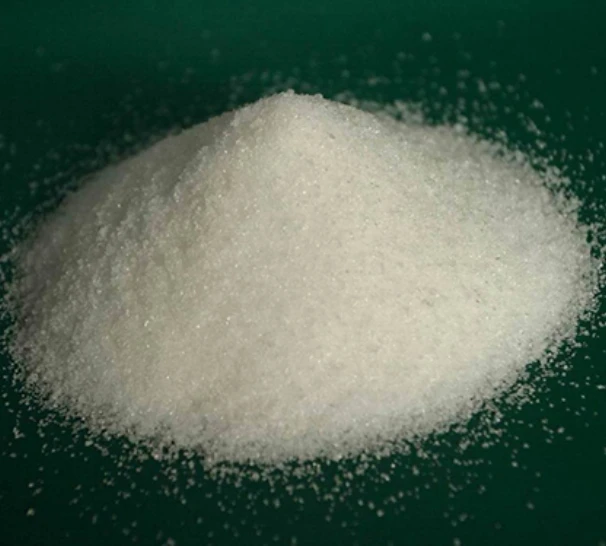Exploring the Properties and Applications of Dry Polyacrylamide in Various Industries
The Significance of Dry Polyacrylamide in Various Industries
Polyacrylamide, a water-soluble polymer made from acrylamide monomers, has garnered attention across different sectors due to its unique properties. Specifically, dry polyacrylamide has become a critical material in numerous applications, ranging from water treatment to agriculture. This article delves into the characteristics, production methods, and diverse applications of dry polyacrylamide, highlighting its importance in modern industries.
Properties of Dry Polyacrylamide
Dry polyacrylamide is recognized for its high molecular weight and excellent solubility in water. As a flocculant and thickening agent, it has the ability to enhance viscosity and facilitate the sedimentation process of particles in suspension. Additionally, polyacrylamide exhibits varying degrees of charge, which can be anionic, cationic, or nonionic, depending on the specific formulation. This versatility allows for tailored applications suited to various environmental conditions and specific needs in industrial processes.
In its dry form, polyacrylamide is stable and easy to transport, which is advantageous for manufacturers and users alike. Upon hydration, it forms a gel-like substance that can be utilized in applications requiring viscosity modification or particle aggregation. Its ability to retain water also contributes to its effectiveness in soil conditioning and erosion control in agricultural contexts.
Production Methods
The production of dry polyacrylamide typically involves the polymerization of acrylamide under controlled conditions. This process can be initiated through various methods, including free-radical polymerization, where the acrylamide monomers are exposed to heat or chemical initiators. The resultant polymer can then be dried to obtain the powdered form, facilitating storage and transport.
During the production phase, careful consideration is given to the control of monomer concentration, temperature, and initiator selection to influence the final properties of the dry polyacrylamide. The molecular weight and degree of cross-linking can be adjusted to meet the specifications required for different applications, affirming the material's versatility.
dry polyacrylamide

Applications in Water Treatment
One of the most significant applications of dry polyacrylamide is in water treatment processes. As a flocculant, it plays a vital role in the clarification of drinking water and the treatment of wastewater. When added to water, polyacrylamide facilitates the aggregation of suspended particles, promoting their sedimentation and removal from the water column. This process not only improves water quality but also reduces the environmental impact of untreated wastewater discharge.
In municipal and industrial wastewater treatment plants, the use of dry polyacrylamide enhances the efficiency of sedimentation and filtration processes, leading to cost savings and improved regulatory compliance. Its ability to reduce turbidity and suspended solids is crucial for meeting health and safety standards in water supply systems.
Role in Agriculture
Beyond water treatment, dry polyacrylamide has found applications in agriculture, specifically in soil management and erosion control. The hydrophilic nature of polyacrylamide enables it to absorb and retain water in the soil, helping to reduce irrigation frequency and promote plant growth in arid regions. Farmers often use it to enhance soil structure, improve moisture retention, and minimize erosion, leading to increased crop yields and sustainability.
Furthermore, dry polyacrylamide can be integrated into fertilizers and pesticide formulations to enhance their effectiveness and reduce leaching. By improving the retention of nutrients and chemicals in the soil, it contributes to better agricultural practices while also promoting environmental conservation.
Conclusion
Dry polyacrylamide has emerged as a fundamental material with extensive applications across various industries. Its remarkable properties make it an invaluable tool in water treatment and agriculture, addressing critical challenges such as water quality and soil productivity. As industries continue to evolve and seek sustainable solutions, the relevance of dry polyacrylamide is poised to grow, ensuring its place as a key player in the advancement of modern industrial processes. As research and development progress in this field, the potential for new and innovative applications of dry polyacrylamide will likely expand, underscoring its significance in both environmental and agricultural contexts.
-
LK-319 Special Scale And Corrosion Inhibitor For Steel Plants: Advanced Solutions for Industrial Water SystemsNewsAug.22,2025
-
Flocculant Water Treatment: Essential Chemical Solutions for Purification ProcessesNewsAug.22,2025
-
Isothiazolinones: Versatile Microbial Control Agents for Industrial and Consumer ApplicationsNewsAug.22,2025
-
Scale Inhibitor: Key Solutions for Water System Scale PreventionNewsAug.22,2025
-
Organophosphonates: Versatile Scale Inhibitors for Industrial Water SystemsNewsAug.22,2025
-
Scale and Corrosion Inhibitor: Essential Chemical Solutions for Water System MaintenanceNewsAug.22,2025





